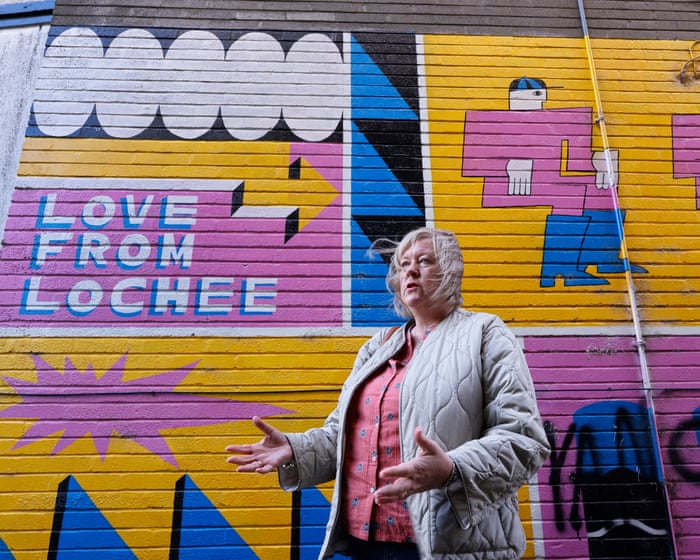If the current Marquess of Londonderry were to die tomorrow, granting his 15-year-old granddaughter a title, would you even hear about it? Could you locate Britain’s grand estates on a map and name their owners? It’s not that the press ignores the aristocracy—the Telegraph still reports on these great houses—but the conversation is now wrapped in the language of meritocracy, which is frankly absurd. Take the Hon Nick Howard, who told the Telegraph recently, “If my son wants to inherit Castle Howard, he’ll have to pass an interview.” Meanwhile, other estate owners highlight their roles as rewilders, eco-warriors, or conservationists. Nowadays, if you take pride in your heritage simply because it’s yours, you’re supposed to keep it to yourself.
In contrast, Lady Annabel Goldsmith, who died at home last Saturday at 91, lived in an era when aristocracy and wealth were openly celebrated. She embodied that time, revealing a new side of herself with each decade.
In the late 1940s, at age 15, she became a lady after her grandfather’s death, and everyone knew about it. Her coming-out ball in the 1950s was attended by the young Queen Elizabeth, as the event’s purpose was to be presented to the queen—a social necessity for debutantes.
In the 1960s, she lent her name to Annabel’s, the exclusive nightclub in London’s Berkeley Square founded by her first husband, Mark Birley, for the elite. By the 1970s, she was linked to the famous aristocratic remark, “When you marry your mistress, you create a job vacancy,” often credited to financier James Goldsmith upon marrying her, his longtime mistress. In reality, he was quoting French filmmaker Sacha Guitry.
Throughout the 1970s, the aristocracy still held significant allure, and Annabel’s club attracted international stars like Grace Kelly, Frank Sinatra, and Muhammad Ali. Back then, it wasn’t just about rubbing shoulders with royalty like Princess Margaret or Prince Charles, but today, even if a celebrity like singer Gracie Abrams asked for the trendiest spot in town, no one would recommend a place just because Prince William goes there. Non-royal aristocrats wouldn’t even be recognized enough to be considered and dismissed.
Annabel Goldsmith lived under constant public scrutiny, with her private life broadcast in real time, whether praised in Tatler or mocked in Private Eye. Her public debut with James Goldsmith came during his 1976 libel case against Private Eye, though their affair was already common knowledge—they had two children together. The case involved wild accusations, like helping Lord Lucan disappear, but the media’s fascination with them was insatiable. (Goldsmith eventually settled for an apology, a decision he later regretted.)
Long before publishing her memoirs in 2004 and 2009, she was a public figure, responding to gossip with witty remarks on fidelity. In the 1980s, she dismissed it as unimportant as long as her husband came home at night, though she later expressed regret over this view.She admitted she wasn’t a “one-man woman,” though it’s unclear exactly who she had in mind.
In the 1980s, Annabel Goldsmith focused on motherhood—a role she later described herself as “incredible” at. While her older children from her first marriage were nearly adults—Rupert, born in 1955, Robin in 1958, and India Jane in 1961—her younger ones with James Goldsmith—Jemima, Zac, and Ben, born in 1974, 1975, and 1980—were still small. Tragically, Rupert vanished off the West African coast at age 30 and is presumed to have drowned.
By then, James Goldsmith had moved to New York with his next mistress, Laure Boulay de la Meurthe. He and Annabel stayed married until his death in 1997.
Back then, the openness about affairs among the elite—especially for prominent figures—seemed to suggest that aristocrats lived by a different moral code than the middle class. It implied that society and the economy were shaped by the whims of the upper class, beyond ordinary rules or democracy. But this lifestyle wasn’t all glamour and superiority. Annabel endured terrible hardships, including the loss of her firstborn. Her second son was mauled by a tiger at age 12 in a private zoo accident, leaving him with permanent facial injuries—a tragedy for which she always blamed herself. Biographers often note the tiger was pregnant, as if to imply things might have been different otherwise.
In the 1990s, Annabel became known as Princess Diana’s confidante and surrogate mother, later testifying at her inquest. She revealed that Diana wasn’t in love with Dodi Fayed or pregnant with his child, quoting Diana as saying she needed a new husband “like I need a rash on my face.” Annabel told the court this phrase was typical of Diana’s unique way of speaking, comparing the annoyance of a spouse to a visible, bothersome skin condition.
During the 2000s, she served as president of the Democracy Movement, which spent heavily in 2001 to protest what it saw as Brussels overstepping into British sovereignty. Annabel claimed not to be anti-European, noting her husband was half-European and her children part French. This stance would become familiar in later years: wanting freedom for one’s own family while restricting it for others. At the time, it didn’t raise concerns, as she seemed motivated more by her late husband’s memory than by causing a constitutional crisis or economic decline. She simply stated, “I don’t want to be governed by Brussels, and I don’t think people want to give up their sovereignty.”
By the 2010s, approaching her 80s, Annabel had many grandchildren. She once remarked that her children with Goldsmith married young and had families quickly, while those with Birley did the opposite, resulting in 14 grandchildren closer in age than expected—though it made her sound like she was running a kennel. She was indeed a dog lover, keeping Norfolk terriers and grand basset griffon vendéens.
While the structure of wealth has globalized over the past century, land ownership in the UK—a key source of power and wealth—hasn’t changed as much as one might think. About 25,000 landowners hold half the country. In Guy Shrubsole’s 2019 book Who Owns England?, he details…In England, 30% of the land is owned by aristocrats and the landed gentry. Another 17% of land in England and Wales remains unregistered with the Land Registry and may also belong to these families, likely consisting of estates that haven’t changed ownership for centuries.
What has shifted, however, is their cultural presence. After the war, the gentry and aristocracy lived in a showcase manner, following patterns similar to today’s celebrities: they had fixed dates on the calendar, events that gathered all the important people, and exclusive venues where the general public was barred but subtly encouraged to watch. The end of debutantes being presented to the queen in 1958 marked a significant decline in this visibility, seemingly a grumpy reaction to the rising demand for equality, at least in principle. Princess Margaret famously remarked, “We had to put a stop to it. Every tart in London was getting in.” In truth, the royals and their inner circle were grappling with an impossible task: maintaining their inherent superiority while adapting to a society that no longer believed in such a concept. They never truly tried to resolve this conflict; instead, the upper classes simply withdrew from the spotlight, like a dog hiding under a blanket.
Annabel Goldsmith experienced the tail end of that public era. While her passing isn’t the time to analyze why the aristocracy retreated due to class awareness and external scrutiny, it’s worth remembering that when they were still highly visible, she embodied the essence and energy of that world.
Frequently Asked Questions
Of course Here is a list of FAQs about Elegant selfassured and unforgettable the remarkable life of Annabel Goldsmith designed to be clear concise and natural
General Beginner Questions
1 Who is Annabel Goldsmith
Annabel Goldsmith is a prominent British socialite environmentalist and author known for her long and vibrant life within Londons high society
2 Why is her life considered remarkable
Her life is remarkable because she has been at the center of British aristocratic and celebrity circles for decades known for her resilience strong personality and fascinating personal story
3 What is she most famous for
She is most famous for being a central figure in the Annabels nightclub scene her marriage to billionaire financier Sir James Goldsmith and her passionate work for animal welfare
4 Is there a book about her life
Yes she has written memoirs most notably Annabel An Unconventional Life which detail her experiences and the people she has known
Deeper Advanced Questions
5 What was her connection to the famous Annabels nightclub
The exclusive London nightclub was named after her by its founder Mark Birley who was in love with her at the time It became a legendary haunt for royalty celebrities and the elite
6 What were some of the major challenges or scandals in her life
She navigated several personal challenges including the very public and complex relationships within her social circle the death of close friends and family and the immense public scrutiny that came with her lifestyle
7 How was she involved in environmentalism and conservation
She is a dedicated environmentalist particularly focused on animal rights She was a leading figure in campaigns against fox hunting in the UK and has been a vocal advocate for various conservation causes
8 What was her relationship with Sir James Goldsmith like
She was his third wife Their relationship was a passionate and significant part of her life placing her at the heart of one of the worlds most powerful and wealthy families until his death in 1997
9 Can you give an example of her selfassured nature
Her selfassurance is often cited in her ability to hold her own in a maledominated upperclass world her unwavering commitment to her charitable causes even




